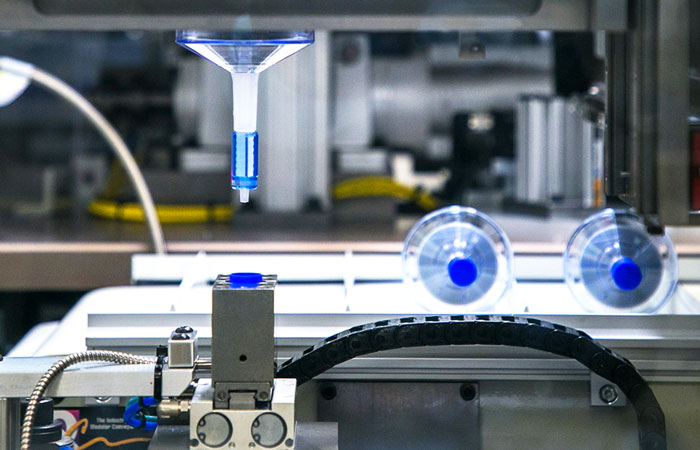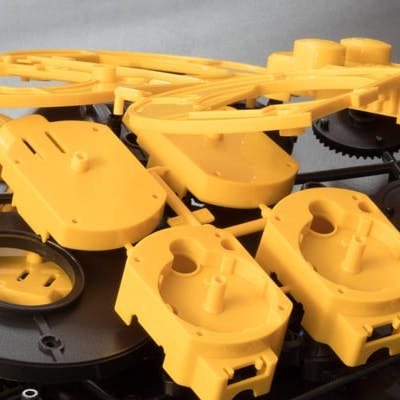Exactly How Plastic Injection Molding Makes Sure Consistency and Accuracy in Production
Recognizing the Essentials of Plastic Shot Molding Procedures
Plastic shot molding works as a keystone of contemporary manufacturing, providing a methodical approach to producing intricate components with precision. This process not only incorporates the essential steps of melting and injecting materials right into mold and mildews yet additionally entails a nuanced understanding of various influencing variables, such as temperature and pressure. As sectors significantly require efficiency and top quality, the ins and outs of this method come to be extra essential. Exploring these crucial components might disclose exactly how even minor adjustments can bring about considerable improvements in manufacturing end results, raising inquiries about the possibility for development in this established process.
What Is Plastic Injection Molding?
Plastic injection molding is a widely made use of production procedure that changes polycarbonate and thermosetting products right into exact and complex shapes. This technique is preferred for its ability to create high volumes of similar get rid of exceptional accuracy, making it a vital method in various sectors, including vehicle, durable goods, and clinical gadgets.
The process includes melting the selected plastic product and injecting it right into a mold under high stress. The mold and mildew, made to the specs of the desired component, enables the liquified plastic to materialize as it cools down and solidifies. Once the product has actually solidified, the mold is opened up, and the ended up component is expelled.
Plastic shot molding supplies numerous benefits, including reduced waste, consistency in production, and the ability to include elaborate layouts that might be challenging with various other producing techniques. Furthermore, it sustains a broad variety of products, each supplying special buildings that can be customized for details applications. As sectors proceed to introduce, plastic injection molding stays at the forefront, making it possible for the development of sophisticated items that meet evolving consumer needs.
The Injection Molding Refine
The injection molding procedure is an advanced method that involves several vital phases to create top quality plastic elements. Plastic pellets are fed right into a warmed barrel where they are thawed into a viscous fluid. This molten plastic is then injected under high pressure right into a precision-engineered mold and mildew, which shapes the product into the preferred form.
Once the mold and mildew is loaded, the plastic is allowed to strengthen and cool down, taking the form of the mold and mildew tooth cavity. Cooling time is crucial, as it influences the cycle time and the last homes of the molded component. After sufficient cooling, the mold opens up, and the finished element is expelled utilizing ejector pins.

Products Used in Injection Molding
Different materials can be utilized in the shot molding procedure, each offering special homes that accommodate details applications. One of the most typically used products include thermoplastics, thermosetting plastics, and elastomers.

Thermosetting plastics, like epoxy and phenolic resins, go through a chemical adjustment during the curing procedure, resulting in an inflexible, inflexible structure. These products are perfect for applications requiring high warmth resistance and structural stability, frequently used in electrical insulators and automobile components.
Elastomers, including silicone and rubber-based products, supply adaptability and durability. Their one-of-a-kind buildings make them suitable for applications that demand elasticity, such as seals and gaskets.
Additionally, specialized materials like bio-based plastics and compounds are obtaining grip for their environmental benefits and improved performance features, broadening the extent of injection molding applications in various sectors. Recognizing the homes of these products is crucial for picking the appropriate type for certain tasks.
Advantages of Injection Molding
Injection molding sticks out as a highly efficient production process that provides numerous advantages for producing complex get rid of precision. Among one of the most substantial benefits is the capability to create detailed layouts that would certainly be tough or impossible to attain with other techniques (Plastic Injection Molding). The process enables tight tolerances and thorough functions, making sure top notch elements
Furthermore, shot molding is recognized for its rapid production capacities, making it an ideal option for high-volume manufacturing. When the mold is developed, parts can be produced quickly, lowering preparations and increasing overall performance. This efficiency not only reduces manufacturing prices but also gives an affordable side in the market.
The versatility of products utilized in injection molding further improves its charm. A variety of thermoplastics and thermosetting polymers can be employed, permitting producers article to pick products that finest meet their certain requirements, including warm, strength, and versatility resistance.
In addition, the process reduces waste, as excess product can typically be reused and reused. This sustainability facet contributes to a decreased environmental impact, making shot molding a responsible production choice. Generally, the advantages of injection molding make it a preferred method for many markets.
Aspects Impacting Item High Quality
While many aspects can influence product high quality in shot molding, comprehending these components is essential for attaining optimal outcomes. Key elements consist of product option, processing criteria, and mold and mildew style.
Product selection plays an essential role, as various polymers show special residential or commercial properties that impact flowability, stamina, and thermal stability. Poor product option can Read Full Report cause defects such as warping or incomplete filling.
Handling specifications, including cycle, temperature level, and stress time, need to be thoroughly regulated. Variations in these settings can cause variances partly measurements and surface area finish. For circumstances, excessively high temperature levels may trigger degradation of the polymer, while poor pressure can cause brief shots.
Mold and mildew design is similarly vital, as it figures out the circulation of the molten plastic and the cooling procedure. Badly made molds may cause irregular air conditioning rates, resulting in recurring stresses and dimensional inaccuracies.

Final Thought
To conclude, plastic injection molding works as a crucial production procedure that makes it possible for the effective manufacturing of top quality components. Proficiency of the shot molding procedure, including the understanding of materials and the impact of different elements on item high quality, is necessary for attaining optimum results. The benefits of this approach, such as cost-effectiveness and style versatility, further underscore its significance throughout numerous sectors, strengthening its standing as a preferred additional info choice for high-volume production.
Plastic injection molding serves as a cornerstone of contemporary manufacturing, providing a systematic technique to creating complicated components with accuracy.Plastic injection molding offers a number of advantages, consisting of reduced waste, uniformity in manufacturing, and the ability to integrate intricate layouts that might be testing with various other producing approaches (Plastic Injection Molding). As sectors continue to innovate, plastic shot molding remains at the center, allowing the advancement of advanced items that meet progressing customer needs
The injection molding procedure is a sophisticated technique that involves a number of essential phases to produce top quality plastic components.In verdict, plastic injection molding offers as a critical production process that allows the efficient production of top notch elements.